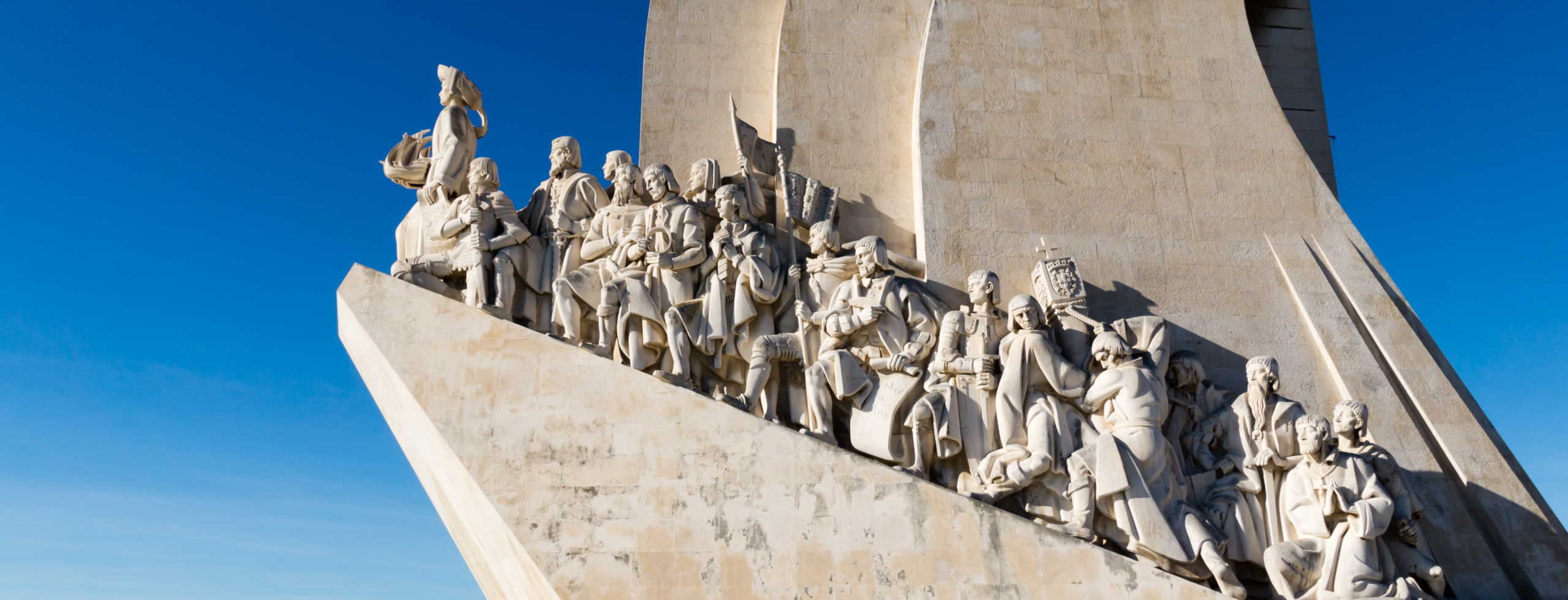-
Destinations
All Destinations
We'll craft an unsurpassed vacation just for you.
All you'll have to do is land
Choose your destination
- Pick your Trip
-
 Build your True Trip
Build your True Trip
- How It Works
- Blog
-

A Guide to Lisbon & Cascais
by TrueTrips
- 1
LISBON THROUGH THE CENTURIES
According to legend, Lisbon was founded by the Greek traveler and hero Odysseus during his twenty-year journey around the Mediterranean. Ulysses was Odysseus’ Latin name and Ulissipo or Olissipo, meaning enchanted port, was Lisbon’s name in the Roman Empire.
Lisbon is one of Europe’s oldest cities whose original settlement dates back to the time of the Celts, the indigenous Iberians, and the eventual establishment of Phoenician and Greek trading posts around 800-600 BC. Since this time, Lisbon had a succession of occupations from various peoples including the Carthaginians, Romans, Suebi, Visigoths, and the Moors.
The Roman’s entered the Iberian Peninsula in 219 BC, and occupied Lisbon by 205 BC making it the most significant city in the Iberian Peninsula. After the fall of the Roman Empire, Germanic tribes invaded the peninsula and by 500 AD, the Visigoths controlled most of Hispania. By the early 700’s, the Islamic Moors invaded the, by this time, Christian Iberian Peninsula, conquering Lisbon in 714. Despite attempts by the Normans, Lisbon remained under Muslim possession until 1147 when Christian crusaders captured the city and returned it to Christian rule.
During the 15th and 16th centuries, Lisbon flourished as the center of a vast empire and this period became known as the ‘Portuguese Discoveries’. It was during this period that Vasco da Gama discovered a sea route to India something that made Lisbon one the world’s most prosperous trading centers at the time. Lisbon experienced great wealth and many of its existing attractions were built during this era, including landmarks like the Jeronimos Monastery and Belem Tower which are today classified as UNESCO World Heritage Sites.
Lisbon is one of Europe’s oldest cities whose original settlement dates back to the time of the Celts, the indigenous Iberians, and the eventual establishment of Phoenician and Greek trading posts around 800-600 BC. Since this time, Lisbon had a succession of occupations from various peoples including the Carthaginians, Romans, Suebi, Visigoths, and the Moors.
The Roman’s entered the Iberian Peninsula in 219 BC, and occupied Lisbon by 205 BC making it the most significant city in the Iberian Peninsula. After the fall of the Roman Empire, Germanic tribes invaded the peninsula and by 500 AD, the Visigoths controlled most of Hispania. By the early 700’s, the Islamic Moors invaded the, by this time, Christian Iberian Peninsula, conquering Lisbon in 714. Despite attempts by the Normans, Lisbon remained under Muslim possession until 1147 when Christian crusaders captured the city and returned it to Christian rule.
During the 15th and 16th centuries, Lisbon flourished as the center of a vast empire and this period became known as the ‘Portuguese Discoveries’. It was during this period that Vasco da Gama discovered a sea route to India something that made Lisbon one the world’s most prosperous trading centers at the time. Lisbon experienced great wealth and many of its existing attractions were built during this era, including landmarks like the Jeronimos Monastery and Belem Tower which are today classified as UNESCO World Heritage Sites.
In 1755, Lisbon experienced a devastating earthquake with subsequent fires and tsunami that almost completely destroyed the entire city. Fortunately, the city was later rebuilt by 18th century Portuguesse stateman Sebastiao Jose de Carvalho e Melo; the elegant financial and commercial district of Baixa Pombalina was built at this time.
By 1807, Napoleon’s forces began a four-year occupation and Lisbon descended along with the rest of Portugal. Following the war, the 20th century brought political unrest to Lisbon and across the nation as a whole. In 1908, at the height of the Republican movement, King Carlos and his heir were assassinated, while on October 5th 1910, the Republicans organised a coup d’etat that overthrew the constitutional monarchy and established the Portuguese Republic. The Carnation Revolution in 1974 was the movement that lead to the fall of the right-wing Estado Novo regime - the longest-lived dictatorship in Western Europe – and to the restoration of democracy, as well as the withdrawal of Portugal from its African colonies.
In 1986, Portugal joined the European Community, receiving massive funding that spurred redevelopment. In 1994, Lisbon was the European City of Culture, and in 2004 it was host to the European Football Championships. Today Lisbon’s local infrastructure has improved with new investment, while its container port has become the largest on the Atlantic coast.
By 1807, Napoleon’s forces began a four-year occupation and Lisbon descended along with the rest of Portugal. Following the war, the 20th century brought political unrest to Lisbon and across the nation as a whole. In 1908, at the height of the Republican movement, King Carlos and his heir were assassinated, while on October 5th 1910, the Republicans organised a coup d’etat that overthrew the constitutional monarchy and established the Portuguese Republic. The Carnation Revolution in 1974 was the movement that lead to the fall of the right-wing Estado Novo regime - the longest-lived dictatorship in Western Europe – and to the restoration of democracy, as well as the withdrawal of Portugal from its African colonies.
In 1986, Portugal joined the European Community, receiving massive funding that spurred redevelopment. In 1994, Lisbon was the European City of Culture, and in 2004 it was host to the European Football Championships. Today Lisbon’s local infrastructure has improved with new investment, while its container port has become the largest on the Atlantic coast.
